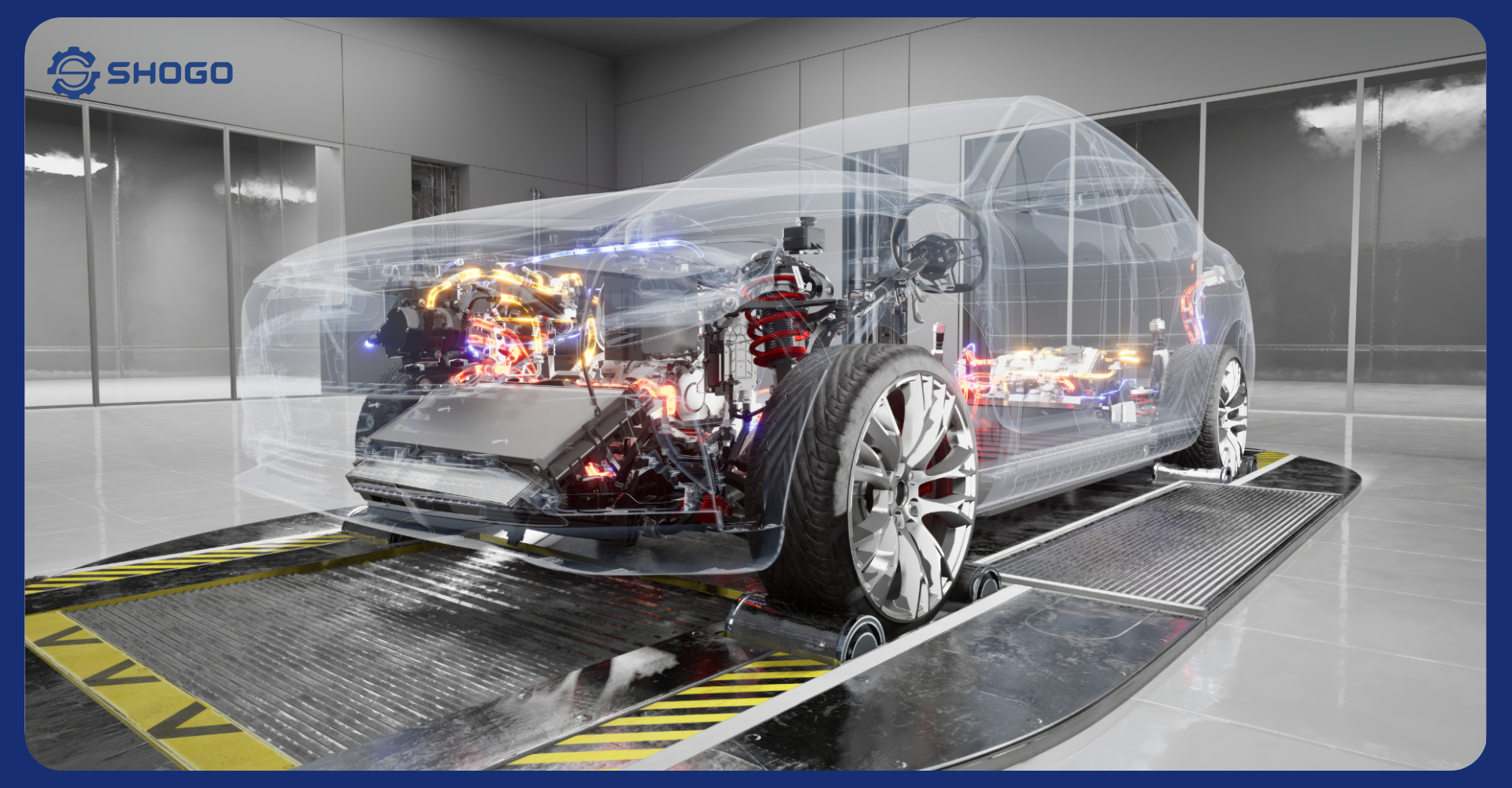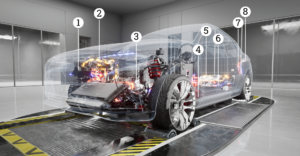
1. Introduction
Electric vehicles, with their outstanding environmental and performance advantages, are becoming increasingly popular worldwide. To operate an electric vehicle, a high-voltage system plays a crucial role. This article will introduce the high-voltage components in electric vehicles, helping you better understand the advanced technology being applied in the automotive industry.
2. Why do electric vehicles use high voltage?
2.1. What is High Voltage?
In the context of electric vehicles, high voltage refers to a voltage level that exceeds the typical threshold used in other electronic systems. This voltage plays a vital role in operating the vehicle’s main components, from the electric motor to the air conditioning system.
2.2. Why do electric vehicles use high voltage?
The application of high voltage in electric vehicles brings many significant benefits:
- Increased efficiency: High voltage helps minimize energy losses during transmission, thereby improving system efficiency.
- Reduced size and weight: With high voltage, conductors can be designed more compactly, contributing to reducing the overall weight of the vehicle.
- Faster charging: High voltage allows for faster battery charging, meeting the increasing demands of users.
2.3. Advantages and Disadvantages of Using High Voltage
Advantages:
- High efficiency
- Fast charging
- Reduced size and weight
- Increased performance
Disadvantages:
- Higher production costs
- High technical requirements in design and manufacturing
- Potential hazards if not handled properly
3. Introduction to high-voltage components in electric vehicles

- 1-Heat Pump Assembly
- 2-High Voltage Cabling
- 3-Front Motor
- 4-High Voltage Battery
- 5-Rear Motor
- 6-Service Access Panel for High Voltage Components
- 7-High Voltage Busbars
- 8-Charge Port
3.1. Heat Pump Assembly
A heat pump operates on the principle of transferring heat from one medium to another. In an electric vehicle, the heat pump uses electrical energy to extract heat from the outside air or the vehicle’s interior, then converts and distributes this heat to warm or cool the cabin.
3.2. High Voltage Cabling
High voltage cabling serves as the electrical nervous system of an electric vehicle, transmitting electrical energy from the battery to various components. These cables are typically made of high-grade insulating materials and are specially designed to withstand high current loads and temperatures.
3.3. Front Motor (Dual Motor vehicles only)
The front motor is a key component that provides power to an electric vehicle, especially in models with all-wheel drive systems. This motor converts electrical energy from the battery into mechanical energy, generating the torque that propels the vehicle forward.
3.4. High Voltage Battery
The high voltage battery is the heart of an electric vehicle, storing electrical energy to power other components. Lithium-ion battery technology is currently the most widely used due to its high energy density and long cycle life. However, manufacturers are continuously researching and developing new battery types with higher performance and lower costs.
3.5. Rear Motor
The rear motor performs a function similar to the front motor, providing propulsion to the rear wheels. In some models, the rear motor can be tuned to produce higher torque, enabling quicker acceleration.
3.6. Service Access Panel for High Voltage Components (Ancillary Bay)
The service access panel is an essential opening that allows technicians to easily access high voltage components within the vehicle for maintenance and repairs. This panel is typically designed with safety in mind to prevent hazards.
3.7. High Voltage Busbars
High voltage busbars are large conductive bars used to distribute electrical energy to various components within the vehicle. Busbars are typically made of copper or aluminum, offering excellent conductivity and high current carrying capacity.
3.8. Charge Port
The charge port is the connection point between the electric vehicle and an external power source. Various charging standards exist, including Type 1, Type 2, and CCS. The choice of charging port depends on the specific country and vehicle model.
4. Conclusion
High voltage components play an important role in ensuring the performance and reliability of electric vehicles. Thanks to advances in technology, electric vehicles are becoming smarter and more convenient. Understanding these components will help you use and maintain electric vehicles safely and effectively.


